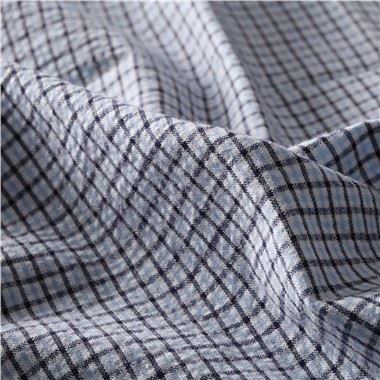What is Laminated Nonwoven Fabric?
May 12, 2025
Laminated nonwoven fabric is a multi-layer material created by combining nonwoven fabric with other functional materials, such as plastic films, meltblown fabric, aluminum foil, or another layer of nonwoven, through composite technology. This process enhances its properties compared to conventional nonwoven fabric, providing features like water resistance, improved mechanical strength, barrier properties, or breathability. As a result, it is widely used in industries such as medical, hygiene, packaging, and agriculture.
Nonwoven fabric itself is a non-woven material made by bonding fibers together mechanically, thermally, or chemically, offering characteristics like lightness, softness, and breathability. Laminated nonwoven fabric builds on this foundation by integrating additional materials through methods such as heat pressing, adhesive bonding, or ultrasonic welding, forming versatile composite materials. For example, in medical protective clothing, nonwoven fabric is often laminated with polyethylene (PE) film to provide waterproof and antibacterial properties. In diapers, nonwoven fabric is combined with breathable film to prevent liquid leakage while maintaining skin dryness.
Common Laminated Combinations:
1. Nonwoven fabric laminated with PE film,it is widely used in medical packaging and hygiene products to provide a waterproof barrier.
2. Nonwoven fabric combined with meltblown fabric, it is used to manufacture high-efficiency filtration masks, such as the middle filtration layer in KN95 masks.
3. Nonwoven fabric laminated with aluminum foil, it is commonly used in food packaging or high-temperature insulation due to its excellent light-blocking, oxygen-barrier, and heat-resistant properties.
4. Nonwoven fabric bonded with elastic film, it can produce stretchable medical tapes or protective clothing, improving wear comfort.
Production Processes:
Laminated nonwoven fabric is primarily manufactured through three methods: heat pressing, adhesive bonding, and ultrasonic welding.
1. Heat pressing uses high temperature and pressure to bond materials, making it suitable for thermoplastic materials like PE or PP film.
2. Adhesive bonding employs adhesives to combine different layers, ideal for composites requiring high bonding strength.
3. Ultrasonic welding is an eco-friendly, adhesive-free method that fuses materials at a molecular level through high-frequency vibrations, making it suitable for medical products with strict chemical residue requirements.
Applications:
Due to its versatility, laminated nonwoven fabric is widely used across various fields:
1. In the medical industry, it is used for surgical gowns, sterilization wraps, and masks, providing protective and antibacterial functions.
2. In hygiene products, it serves as a key material for diapers and sanitary pads, ensuring leak-proof performance and comfort.
3. In the packaging industry, it is used for sterile medical device packaging and food bags, offering both strength and barrier properties.
4. In agriculture, it is made into thermal insulation coverings to help regulate soil temperature and moisture.
5. In industrial applications, it can be used for filtration materials, soundproofing felts, and more, meeting diverse needs.
Advantages:
Laminated nonwoven fabric stands out for its high customizability, allowing adjustments in material combinations and thickness to optimize performance. For instance, medical products may require high barrier properties, while agricultural covers prioritize breathability and durability. Additionally, compared to traditional textile composites, laminated nonwoven fabric is lighter, easier to process, and helps reduce production costs. With growing environmental concerns, some laminated nonwoven fabrics now incorporate biodegradable nonwoven materials and bio-based films to minimize ecological impact.
In summary, laminated nonwoven fabric overcomes the limitations of single-layer nonwoven materials through composite technology, enabling its critical role across multiple industries. Its diverse combinations, flexible production processes, and broad applications make it a vital category in high-performance composite materials. Future innovations in sustainable materials will further expand its potential uses.







